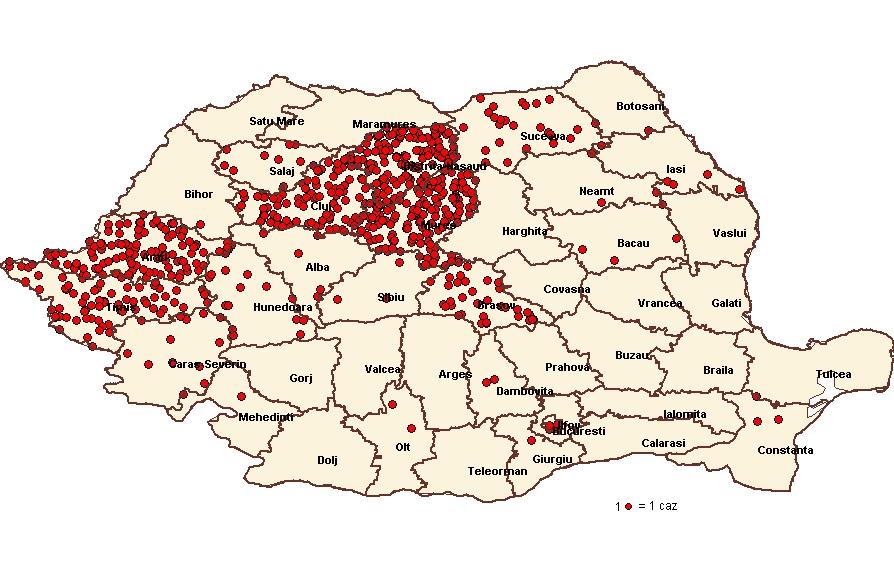The epidemic may be a sign of deeper problems in the immunization system: experts warn that polio vaccination rates are also too low while GPs complain that the vaccine supply is unsteady.
The WHO Regional Office for Europe says that WHO/UNICEF data show routine immunization rates are below target in Romania. Additional ‘system-wide challenges’ also exist, leading to unequal access to vaccination. Furthermore, authorities do not have enough information to say who is being missed and why.

These challenges have contributed to the persistence of large, diverse and undefined immunity gaps, according to WHO/Europe. Romania’s national public health system is currently working to map susceptible groups, identify the causes and take adequate actions with a needs-tailored approach.
“It is a tragedy that lives have been lost, and our thoughts are with the families and communities who have been affected by this measles outbreak,” says Robb Butler, Programme Manager, Vaccine-preventable Diseases and Immunization programme, WHO Regional Office for Europe.
“Romania remains endemic for measles and rubella and at high risk of polio transmission following importation. This is very concerning. The solution is dependent on strong political commitment and urgent action by health authorities to ensure vaccination is available to all individuals within Romania’s borders.”
The WHO Regional Verification Commission for Measles and Rubella Elimination (RVC) concluded at its October 2015 meeting that both measles and rubella were endemic in Romania as of the close of 2014, and invited Romania to strengthen population immunity by reaching and maintaining >95% coverage with both doses of measles and rubella vaccines and to consider catch-up campaigns.
The Regional Certification Commission for Poliomyelitis Eradication (RCC) concluded at its June 2016 meeting that while all countries remain at risk of importation, three countries, including Romania, remain at high risk of a sustained polio outbreak following importation. Romania is considered to be at high risk due to sub-optimal population immunity and poor quality of surveillance.
Doctor’s view
The spread of pseudoscience and ‘gossip’ through the media is a major challenge to public health, according Dr Valeria Herdea, President of AREPMF, a professional medical organisation committed to educating paediatricians. Her organisation has been touring the country working with GPs to communicate with parents about the need for immunization.
“We still have in the media, gossip shows with different celebrities of dubious taste, who provide all kind of ‘magic methods’ for child immunity, without vaccination, but who capture public attention much more than scientific information,” she told Vaccines Today. This is increasing the percentage of those who became suddenly anti-vaccination or at least hesitant.”
Dr Herdea says that 20 years ago, vaccination rates were above 95%. Today, she believes uptake fluctuates between 75% and 80%.
There have also been problems with vaccine supply, Dr Herdea adds. “In the past year, we have had problems with accessing hexavalent and tetravalent vaccines, as well as MMR.” This, she adds, is a challenge for GPs and risks undermining the doctor-patient relationship.
“We are educating our patients about the benefits of vaccination but then when they come to be vaccinated we find we don’t have the supply and all we can do is apologise,” Dr Herdea says.
WHO action
WHO/Europe says its officials have conducted several review missions to Romania to identify and address the country’s specific needs.Follow-up missions are planned and ongoing technical support is provided by WHO and partner organizations to Romania’s public health system to:
- respond to outbreaks;
- study previous outbreaks to better define affected populations and underlying causes and to analyse the economic effects of measles/rubella outbreaks and cases of congenital rubella syndrome (CRS) compared to the cost of having a highly efficient immunization programme with high coverage;
- develop strategies and interventions in advocacy, communication and strengthening of the health and immunization systems in order to close the immunity gaps and achieve and sustain >95% measles/rubella vaccine coverage with routine immunization.
Outbreaks like the ongoing epidemic in Romania jeopardise efforts to eliminate measles in Europe. “Measles and rubella are exceptionally contagious diseases,” the WHO says. “With endemic measles transmission ongoing in 18 of 53 Member States in the Region, population movement inside the Region and globally, immunity gaps and suboptimal epidemiological and laboratory surveillance capacities in many European countries, in most cases it is impossible to follow a particular measles virus chain of transmission and define the chain’s actual index case and route of transmission through Europe.”
Trans-border transmission of measles and rubella is ongoing and will continue to be a threat even after all Member States in the European Region have achieved elimination. “The only way to prevent local spread of diseases and avoid reestablishment of endemicity is to ensure that the population in each country is fully protected by immunization.”
Further reading
WHO/Europe has developed several tools to support countries in responding to a measles or rubella outbreak, strengthening immunization and surveillance systems, addressing immunity gaps and sustaining demand for immunization. They include the following publications:
- Guidelines for measles and rubella outbreak investigation and response in the WHO European Region
- Surveillance guidelines for measles, rubella and congenital rubella syndrome in the WHO European Region
- Guide to tailoring immunization programmes
- Vaccine safety events: managing the communications response
- Workbook – Mobilizing resources for immunization
- Immunization advocacy library
- Best practice guidance: How to respond to vocal vaccine deniers in public
- Review of vaccine price data: submitted by WHO European Region Member States through the WHO/UNICEF Joint Reporting Form for 2013




